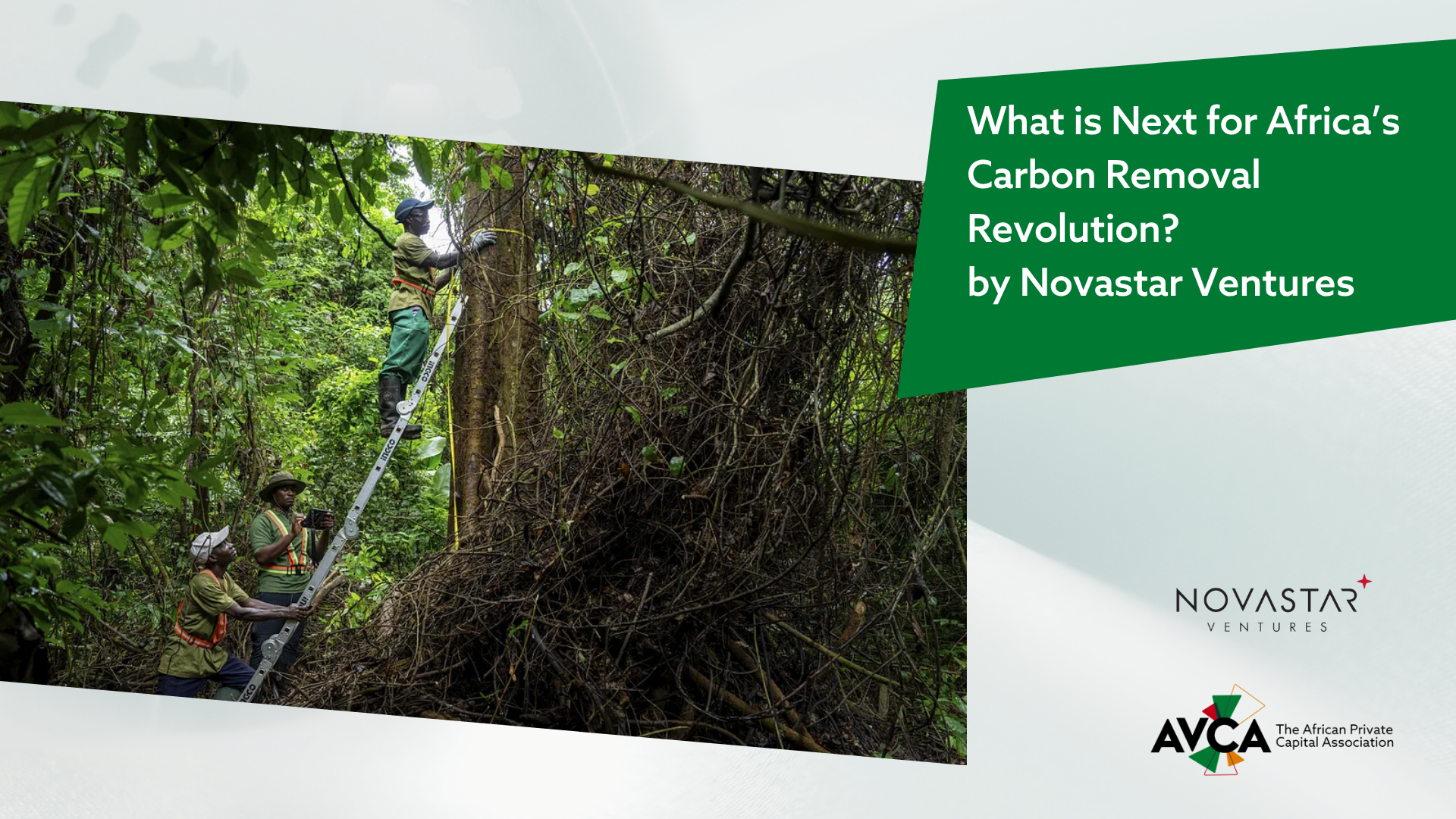What is Next for Africa’s Carbon Removal Revolution?
Abel Boreto, Investment Director at Novastar Ventures East Africa Advisors Limited, writes:
The carbon removal landscape is at an inflection point. What was once a handful of pilot projects is now recognised as an essential pillar of any credible global net-zero strategy and Africa stands uniquely poised to deliver at scale.
Our latest market map, Africa’s Carbon Removal Revolution, explores why. Here are a few things we have learned.
From Carbon Avoidance to Carbon Removal:
Today, more than 80% of carbon credits issued come from reduction and avoidance projects such as preserving forests, improving fuel or energy efficiency, reducing methane emissions, and transitioning to low-emission energy sources or transportation solutions. These will remain vital. But to truly neutralise the residual emissions we cannot eliminate, the world must shift toward durable carbon removals.
To date, only 3% of credits globally have come from removal projects, and a fraction of those meet the bar for durability. This is where we see the biggest opportunity: to accelerate Africa’s role in delivering verifiable, scalable, and cost-effective carbon removal credits at a global scale.
Carbon Removal Is Growing, But It Is Still Buyer-Constrained:
There are strong tailwinds:
· Purchases of durable Carbon Removal credits increased at a 192% CAGR between 2022 and 2025.
· Microsoft accounts for the majority of global durable Carbon Removal credit purchases.
· Other early buyers (such as Frontier, JP Morgan Chase, Airbus, Amazon and Google) are stepping up, but the market still lacks sufficient breadth.
This is a critical moment: the concentration of purchasers makes the market fragile, but it also indicates pent-up demand for cost-effective, bankable supply, which is something Africa can help unlock.
Why Africa?
Africa combines all the ingredients needed to become a Carbon Removal powerhouse:
· Vast land and favourable climate for reforestation and agroforestry;
· Abundant biomass for high-quality biochar production;
· Basalt-rich geology for enhanced rock weathering feedstock;
· Low-cost renewable energy and growing climate-tech ecosystems;
· And critically, entrepreneurs building context-specific solutions for the continent.
The Four Methods We Are Watching:
We identified four Carbon Removal approaches gaining traction in Africa:
1. Afforestation, Reforestation & Revegetation (ARR):
Simple to understand, but long-term durability and land use risks remain concerns.
2. Biochar
The most commercially advanced in Africa today, with high Monitoring, Reporting, and Verification (MRV) potential and clear co-benefits for smallholder farmers.
3. Enhanced Rock Weathering (ERW)
A game-changer if scaled. Africa’s warm and humid climate and favourable geology make it ideal for rapid carbon mineralisation.
4. Direct Air Capture (DAC)
Although still in its infancy, Africa’s access to low-cost clean energy could facilitate a reduction in costs more quickly than in other regions.
We spotlight several innovators who are already demonstrating positive results, including Mati Carbon, NetZero, Varaha, Biological, Flux, Tera, and others, whose early execution is proving that Africa can deliver at the forefront of climate innovation.
What Happens Next?
Scaling Africa’s role in carbon removal requires:
1. Fit-for-purpose funding: blended capital and catalytic buyers who understand emerging market realities.
2. Verification infrastructure: Africa-centric MRV tools that adhere to global standards while avoiding unfeasible costs.
3. Support for early-stage ventures: local entrepreneurs with innovative ideas and practical execution strategies.
Read the full report here: https://www.novastarventures.com/africas-carbon-removal-revolution/
